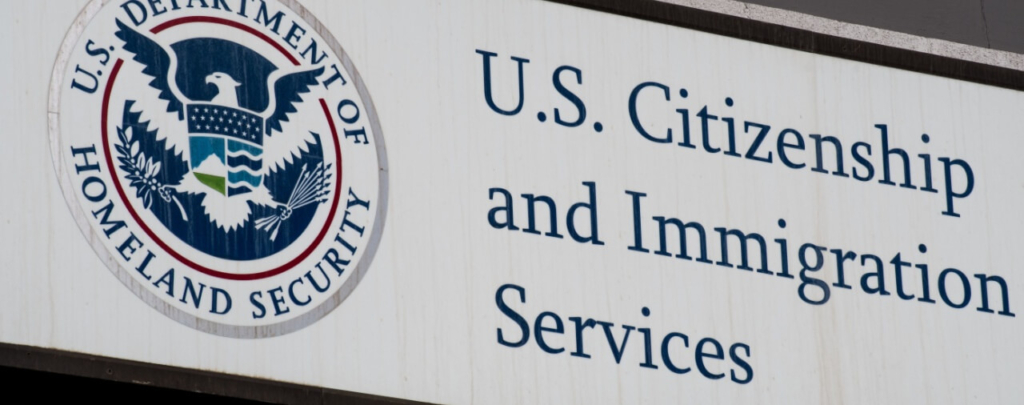Introduction: Repeal of NSEERS Regulations
On December 23, 2016, the Department of Homeland Security (DHS) published a final rule in the Federal Register that removed the regulations underlying the National Security Entry-Exit Registration System (NSEERS) program. You can read the final rule here: [81 FR 94231]. The Final rule affects regulations that were found in 8 C.F.R. 214 and 264. NSEERS had not been active since 2011.
In this article, we will examine what the NSEERS program was, what the repeal means, and how it may affect the immigration plans of the incoming Trump Administration.
What Was NSEERS?
The Federal Register notice explains that the first iteration of the NSEERS program was implemented in 1991 by the then-Immigration and Naturalization Service (INS). The program instituted special registration and fingerprinting requirements for certain nonimmigrants who were traveling on Iraqi or Kuwaiti travel documents. These regulations were repealed in 1993, but the INS published regulations that allowed the Attorney General to “require certain nonimmigrants of specific countries to be registered and fingerprinted upon arrival to the United States” under section 263(a) of the Immigration and Nationality Act (INA). Section 263(a)(6) of the INA gives the Attorney General the authority to “prescribe special regulations and forms for the registration and fingerprinting” of any class of aliens not admitted for permanent residence, and (section 263(a)(1)-(5) lists specific classes of aliens).
In the wake of the terrorist attacks on September 11, 2001, the INS proposed and then finalized a rule to expand the existing registration and fingerprinting program in 8 C.F.R. 264.1(f). The regulations also amended 8 C.F.R. 214.1 so as to require selected nonimmigrants to comply with the NSEERS regulations in 8 C.F.R. 264.1(f) as a condition of admission. The program, which was called NSEERS, required designated nonimmigrants to report to the INS within 30 days of arrival in the United States and “upon certain events such as a change of address, and at the time of departure from the United States.” The program initially covered nonimmigrants from Iraq, Iran, Libya, and Sudan (Syria was added shortly thereafter). The INS then announced that it would only apply to males of 16 years or older from the designated countries. Between November 2002 and January 2003, the INS added an additional 20 countries to the NSEERS program. In December of 2003, the INS amended the NSEERS regulations to suspend the 30-day post arrival and annual re-registration requirements.
In 2011, the DHS published a notice in the Federal Register stating that it would no longer register nonimmigrants under NSEERS, and it removed all countries from the NSEERS compliance list. Its reasoning was based on the assertion that it had more tools to capture information about nonimmigrant travelers to the United States that were not available in 2002. For this reason and others, the DHS determined that the data captured by NSEERS did not increase security. However, the DHS did not repeal the regulations underlying the NSEERS program.
In 2012, the DHS Office of Inspector General (OIG) recommended that the DHS eliminate the regulatory structure of NSEERS. Among the reasons provided for this recommendation was that NSEERS had been resource-intensive, the NSEERS database often did not function properly, and NSEERS had been ineffective. Furthermore, the DHS OIG agreed with the DHS that “newer automated targeting systems enabled more sophisticated intelligence-driven targeting than under NSEERS.”
Why Were the Regulations Repealed Now?
For reasons that are not entirely clear from the Federal Register notice, the DHS did not act on the OIG’s recommendation to repeal the regulations underpinning NSEERS, despite having found that the program would no longer serve a purpose. It has been speculated that the DHS was prompted to repeal the regulations now because of the possibility that President-Elect Donald Trump might consider reinstating a version of the program upon taking office. This speculation was bolstered by his consideration of Kansas Secretary of State Kris Kobach — who was one of the architects of the NSEERS program — for the position of Secretary of Homeland Security. This speculation was then bolstered when Kobach was seen with a policy paper suggesting the revival of the NSEERS program in his meeting with the President-Elect.1
Had the NSEERS regulations remained in place, President-Elect Trump would have been able to quickly revive the program if he wanted to do so. However, now that the regulations have been repealed, the DHS would have to promulgate new regulations to create a similar program in the future. It is important to note that although the NSEERS regulations have been repealed, the Attorney General retains the statutory authority under section 263(a)(6) of the INA to execute a similar program for any class of nonimmigrant arrivals.
Was the Program a “Muslim Registry”?
The NSEERS program has been commonly called a “Muslim registry.”2 There are likely two reasons for this. The first reason is that 24 of the 25 countries included in the program were predominantly Muslim, with the lone exception being North Korea. The second reason is that President-Elect Trump has at times suggested a broad Muslim registry of unclear parameters or specific requirements for Muslim aliens seeking admission, or more recently country-specific requirements or restrictions instead of religious ones.
However, looking at how the NSEERS program actually worked, it would be inaccurate to call it a “Muslim registry.” First, the following is the list of countries that were included in the NSEERS program before the DHS ceased using it in 2011:
Afghanistan;
Algeria;
Bahrain;
Bangladesh;
Egypt;
Eritrea;
Indonesia;
Iran;
Iraq;
Jordan;
Kuwait;
Lebanon;
Libya;
Morocco;
North Korea;
Oman;
Pakistan;
Qatar;
Saudi Arabia;
Somalia;
Sudan;
Syria;
Tunisia;
United Arab Emirates; and
Yemen.
As noted, the law has been commonly called a “Muslim registry” because 24 of the 25 countries have majority Muslim populations. However, there are multiple problems with this overly-broad description.
First, the program applied to all males over the age of 16 from these countries, not only Muslims. Many of the countries on the list, such as Bangladesh, Egypt, Lebanon, and Pakistan (to name a few) have large non-Muslim populations as well. A male Coptic Christian from Egypt was subject to the same registration requirements as a Muslim from Egypt. Furthermore, that the program was limited to males over the age of 16 meant that women were never subject to the NSEERS registration requirements, whether they were Muslim or not.
Second, although 24 of the 25 countries were majority Muslim, the majority of majority-Muslim countries were not included in NSEERS. A Pew Research Center report published in 2011 found that there were 54 countries and regions3 with populations that were at least 50% Muslim.4 Of the ten countries with the largest Muslim populations, three — India, Nigeria, and Turkey — were not included in NSEERS (note that Muslims do not make up a majority of India and made up an estimated 41-50% of Nigeria). 12 countries that were found in 2011 to be at least 90% Muslim were not included in NSEERS: Azerbaijan, Comoros, Djibouti, Gambia, Maldives, Mauritania, Mali, Niger, Senegal, Tajikistan, Turkmenistan, and Uzbekistan.
For these reasons, while it is true that the vast majority of nonimmigrants affected by NSEERS were Muslim, it is not fair to call the program a “Muslim registry.” The Bush Administration clearly exercised discretion in choosing which countries should be included in the program, did not base the requirements on religion, and in fact left out a very large number of majority-Muslim countries and countries with significant Muslim minority populations. Had President Bush been creating a Muslim registry, he would have been especially hard-pressed to explain the omission of several countries with significant Muslim populations and many that are nearly entirely Muslim. The fact that nearly every country that was deemed to pose special security risks was predominantly Muslim does not make NSEERS a “Muslim registry.”
Was the Program Effective?
Although the program was not a “Muslim registry,” that does not mean that it was ultimately effective. The program was not only ended because the DHS created better tools to monitor and track nonimmigrants, but also because NSEERS did not accomplish what it was created to do. Instead of being an effective national security program, NSEERS mainly led to many individuals covered by the program being charged with regular immigration violations. While finding ways to catch immigration violations is an important mission for the DHS, there is no specific imperative that exists to catch an Egyptian national committing a regular immigration violation that does not exist to catch a Mexican national committing a regular immigration violation. The reason for the program’s existence was to identify national security threats. Because the program primarily caught regular immigration violations committed by a small subset of nonimmigrants, it failed in its mission and was not a valuable use of INS/DHS resources.
What Does This Mean for President-Elect Trump?
It is unclear as to whether President-Elect Trump would have revived NSEERS had the regulations not been repealed. For example, it would have seemed likely had he decided to nominate Kris Kobach to be Secretary of DHS, but President-Elect Trump ultimately chose retired General John Kelly, who has no known position on the NSEERS program. As I detailed in multiple blog posts, President-Elect Trump’s position on immigration security is unclear, and has been at times absurd [see blog] and at other times somewhat reasonable [see blog].
For a variety of reasons, any action taken by the next administration on immigration — especially as it affects Muslims — will be heavily scrutinized. Some of the reasons for this are fair. For example, the President-Elect proposed early in his campaign to ban all Muslim immigration and he has at the very least alluded to religion-based registries. These proposals were rightfully criticized, reflecting that he will be carefully watched even if he proposes entirely effective and reasonable programs to improve immigration security. Other reasons are unfair. For example, many profess that nonimmigrants seeking admission to the United States, and nonimmigrants already present in the United States, have the same rights as U.S. citizens. This is simply not the case. The United States has an absolute right to determine who is admitted and who is not and under what circumstances and conditions. The President and the Congress have a responsibility to exercise this authority carefully and in ways to protect America’s interests and security. We have the authority to assess actions taken with respect to immigration with respect to whether the actions benefit the United States and American security, and not as if nonimmigrants or even permanent residents have the same rights as U.S. citizens.
If President-Elect Trump had plans to revive NSEERS, President Obama did him a favor. Whatever limited benefits NSEERS offered — if any — would have been more than negated by the ensuing firestorm that would have arose had the Trump Administration reinstated it. The Trump Administration will have to make its security-related immigration reforms count and be prepared to carefully explain them to the American people in order to assuage any concerns rooted in past campaign rhetoric or from misconceptions about how immigration law works. NSEERS did not have a record of success to defend, and it has already been defined in the media as a “Muslim registry,” regardless of the inaccuracy of that characterization. The repeal of the implementing regulations for NSEERS will give the Trump Administration and incoming Secretary John Kelly, should he be confirmed, the opportunity to start fresh and develop new immigration reforms that will help improve U.S. security while not squandering its political and moral capital. We can only hope that the President-Elect and his team will propose such sensible and effective immigration reforms in the near future.
- Soergel, Andrew, “Kris Kobach Shows His Papers, Reveals Potential Homeland Security Agenda Under Trump,” usnews.com, (Nov. 21, 2016)
- See e.g., Sakuma, Amanda, “Trump Immigration Adviser Kris Kobach Wrote the Book on Muslim Registry,” nbcnews.com, (Nov. 17, 2016)
- The list includes a select few regions that are not considered independent countries.
- Pew Research Center, “Mapping the Global Muslim Population: A Report on the Size and Distribution of the World’s Muslim Population,” The Pew Forum on Religion and Public Life, (Oct. 2009); see also, Wikipedia, “Islam by country,” en.wikipedia.org, (retrieved on Dec. 27, 2016)





